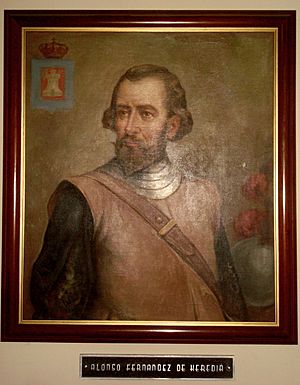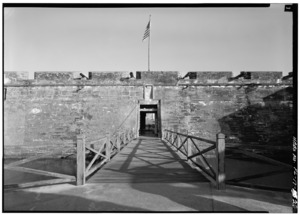Alonso Fernández de Heredia facts for kids
Quick facts for kids
Alonso Fernández de Heredia
|
|
|---|---|
 |
|
| 49th Governor of Honduras | |
| In office 1747 – 1747 (Heredia only served one year in the government) |
|
| Preceded by | Juan de Vera |
| Succeeded by | Diego de Tablada |
| 39th Royal Governor of La Florida | |
| In office 18 April 1751/55 – 21 April 1758 |
|
| Preceded by | Fulgencio García de Solís |
| Succeeded by | Lucas Fernando Palacios |
| 77th Colonial Governor of Yucatán | |
| In office 1758–1761 |
|
| Preceded by | Melchor de Navarrete |
| Succeeded by | Jose Crespo y Honorato |
| 37th Governor of Guatemala | |
| In office 1761–1771 |
|
| Preceded by | Juan de Vera |
| Succeeded by | José González Rancaño |
| 40th Governor of the Nicaragua province | |
| In office 1761–1771 |
|
| Preceded by | Juan de Vera |
| Succeeded by | José González Rancaño |
| Personal details | |
| Born | unknown Cetina, Zaragoza, Spain |
| Died | March 19, 1782 Guatemala City |
| Spouse | Elena Marin de Villanueva e Hijar |
| Profession | Captain General and politician |
Alonso Fernández de Heredia (died March 19, 1782) was an important Spanish leader. He was a Captain General and a politician. He served as governor in several places. These included Honduras (in 1747), Florida (from 1751 to 1758), and Yucatan (in modern-day Mexico, starting in 1758). He also governed the Captaincy General of Guatemala (from 1761 to 1771) and Nicaragua (from 1761 to 1771).
Contents
Who Was Alonso Fernández de Heredia?
Alonso Fernández de Heredia was born in Cetina, Zaragoza, Spain. This was in the first half of the 1700s. His father was Antonio Fernandez de Heredia y Liñan Altarriba. His mother was Beatriz Ximenez de Cerdan y Gurrea.
He started his career in the Spanish army. He became a captain and later a Field Marshal. This means he was a very high-ranking officer.
Governor of Florida
In 1751, Alonso Fernández de Heredia became the governor of Florida. During his time, he helped start a naval stores industry. This industry made things like tar and pitch for ships.
The Castillo de San Marcos is a famous fort. Important changes to the fort were finished in 1756. This happened while Heredia was governor. A drawbridge and a special gate called a portcullis were added. A plaque with the Spanish royal coat-of-arms was also placed above the entrance.
Florida's population grew under Heredia's rule. In October 1757, 363 farmers arrived. They came from the Canary Islands in Spain. The Spanish government wanted to bring more settlers to Florida. Between 1757 and 1759, 154 families from the Canary Islands moved there. Heredia's time as governor of Florida ended on April 21, 1758. He then became the governor of Yucatan, Mexico.
Governor of Yucatan
In Yucatan, Heredia achieved several things. He announced a royal decree. This rule meant that Native American women did not have to pay certain taxes. He also ordered changes to make the fortifications of Campeche stronger.
Governor of Guatemala and Nicaragua
On June 14, 1761, Heredia was sent to Guatemala. He became its Captain General. He asked the Spanish king to make Guatemala a "viceroyalty." This would have given the region more power. He pointed out that Guatemala had large cattle ranches and farms. They grew sugar cane, fruit, and cocoa. Its cities were also developing well. However, his request was not approved.
In the same year, he also became governor of Nicaragua. He was also the acting governor of Honduras. In Honduras, he made several changes. He updated the tax rules. He also expanded the government's reach into social areas. These changes were successful. This was because he had built good relationships with local officials. Heredia also improved relations with local governments. This made it easier for people in Tegucigalpa to get their requests processed.
He left the Captaincy General of Guatemala on March 12, 1768. Heredia was also recognized for building Omoa. Many people faced difficulties there because of the harsh climate.
Alonso Fernández de Heredia passed away on March 19, 1782. He died in Guatemala City.
Family Life
Alonso Fernández de Heredia married Elena Marin de Villanueva e Hijar. She was the 3rd Countess San Clemente. They had one daughter together. Her name was Maria Magdalena Fernandez de Heredia y Marin de Villanueva.
See also
 In Spanish: Alonso Fernández de Heredia para niños
In Spanish: Alonso Fernández de Heredia para niños


